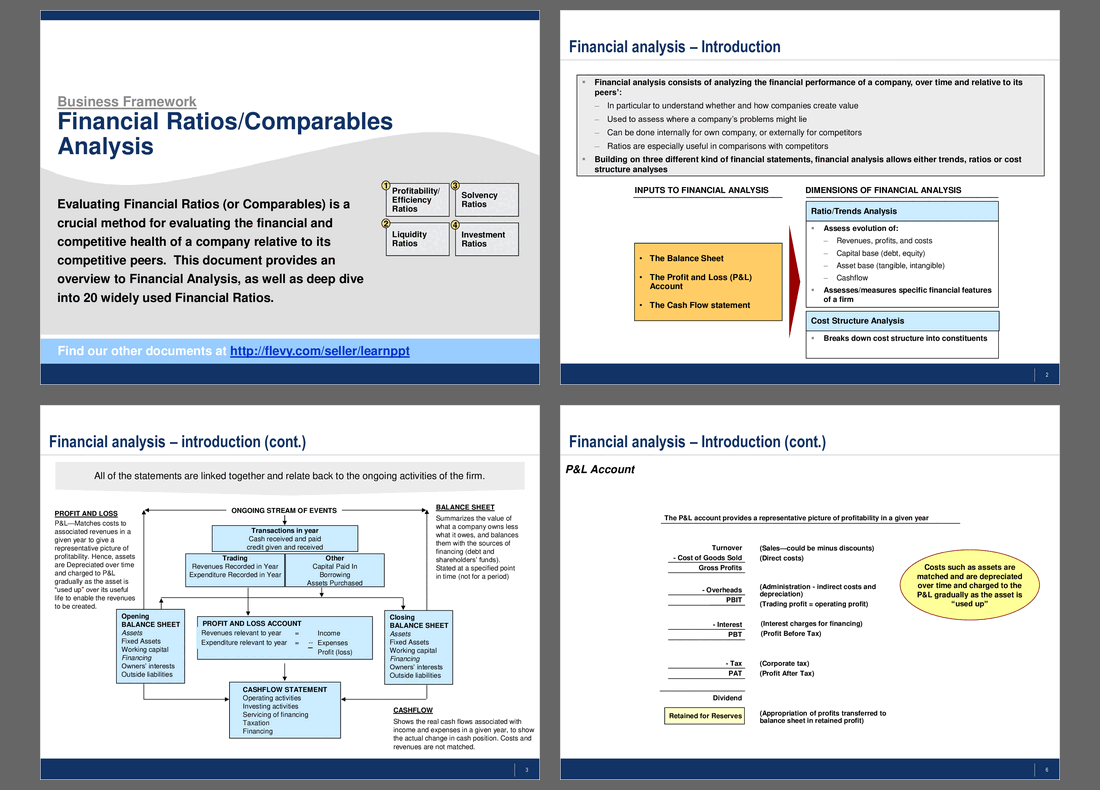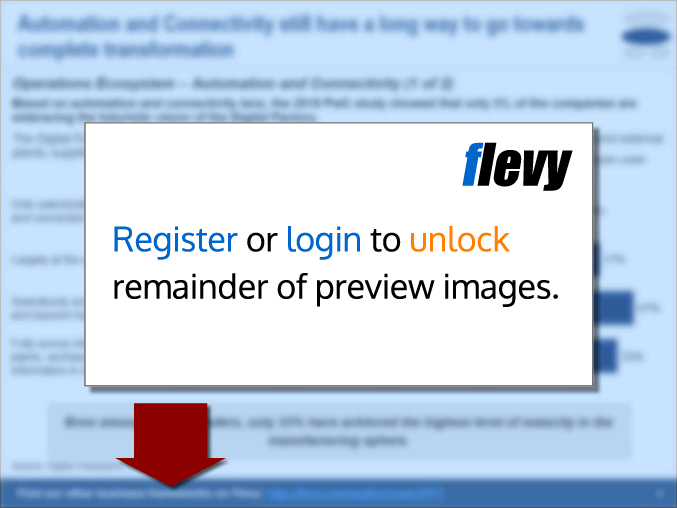Financial Ratios (Comparables) Analysis (PowerPoint PPT Slide Deck)
PowerPoint (PPT) 22 Slides
FINANCIAL ANALYSIS PPT DESCRIPTION
Evaluating Financial Ratios (or Financial Comparables) is a crucial method for evaluating the financial and competitive health of a company relative to its competitive peers. This document provides an overview to Financial Analysis, as well as deep dive into 20 widely used Financial Ratios.
This comprehensive document delves into the intricacies of financial ratio analysis, offering a robust framework for understanding key financial metrics. It starts with a clear definition of common financial terms, ensuring that users have a solid foundation before diving into more complex analyses. The balance sheet section meticulously breaks down assets and liabilities, providing a snapshot of a company's financial health at a specific point in time.
Key strategic ratios are explored in depth, covering profitability, efficiency, solvency, and liquidity ratios. Each ratio is presented with its formula, what it measures, and the primary drivers behind it. This structured approach allows executives to quickly grasp the significance of each ratio and how it impacts overall financial performance. The document also includes illustrative outputs, such as cash flow trends, to visualize how these ratios play out over time.
The final sections of the document highlight data sources, case examples, and related analytics. This ensures that users can not only understand and calculate financial ratios, but also apply them in real-world scenarios. The inclusion of industry reports, analyst reports, and SEC filings as data sources underscores the document's practical utility. This is an essential resource for any executive looking to enhance their financial analysis capabilities.
Got a question about the product? Email us at support@flevy.com or ask the author directly by using the "Ask the Author a Question" form. If you cannot view the preview above this document description, go here to view the large preview instead.
Source: Best Practices in Financial Analysis, M&A PowerPoint Slides: Financial Ratios (Comparables) Analysis PowerPoint (PPT) Presentation Slide Deck, LearnPPT Consulting
FINANCIAL ANALYSIS PPT SLIDES
This document is available as part of the following discounted bundle(s):
Save %!
Competitive and Company Cost Analysis
This bundle contains 5 total documents. See all the documents to the right.










